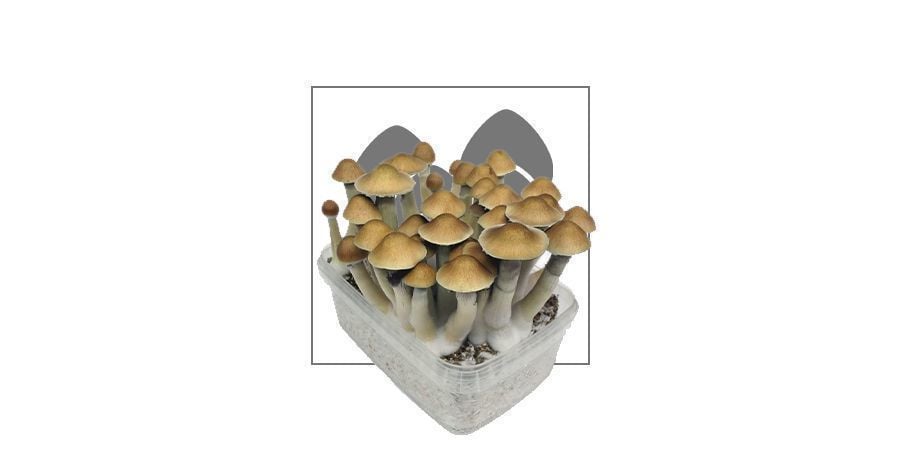Creating A Magic Mushroom Outdoor Patch
Mushrooms are usually cultivated indoors, but that’s not how it has to be. With some mycelium you can easily grow a years’ supply of the sacrament in your backyard.
You can either buy shrooms, or grow them yourself. Obviously, growing them yourself has a few distinct advantages: Not only is it less costly, but you can establish a much deeper relationship with the mushrooms that take you on a trip. Plus, you have a bountiful supply at hand.
The disadvantage of cultivating mushrooms from scratch is that it’s work. Not so much when using a fully cultivated grow kit, but when starting from spores there is a learning curve. The main problem concerns contamination and much of the effort goes into minimizing the risk of a mold infection, which requires clean working practices and some equipment. That’s why creating a garden patch is a great solution: You don’t have to worry about contamination and get great yields.
You don’t even need to plant the patch in your garden, it can be done in any suitable place. A secluded area in the forest works very well and comes with the advantage of freely spreading the valuable spores in that region. Over time, forest patches establish a natural population of the fungi.
BASICS ABOUT GROWING MAGIC MUSHROOMS
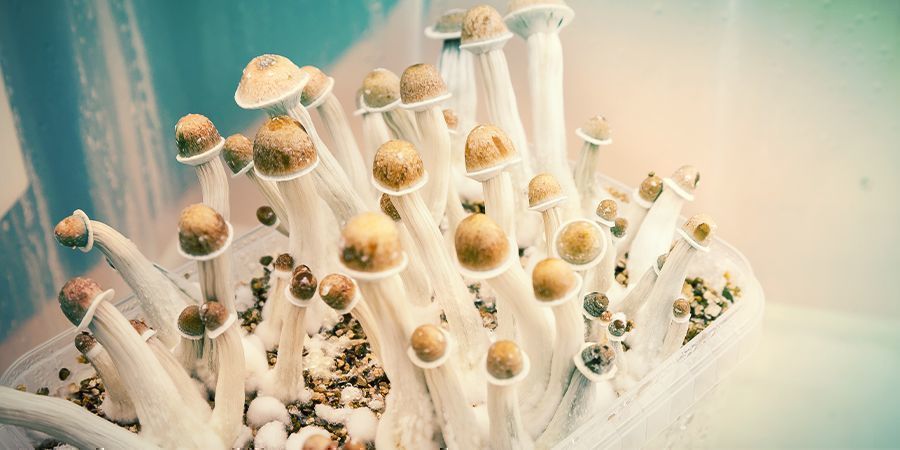
Before embarking on the cultivation, it’s good to understand a few basics. The most important part to grasp is that the actual mushroom is just the fruiting body of the organism, and the „real being“ is the mycelium. Mycelium is the vegetative part of the fungus, it’s the white web that slowly progresses through a substrate. In order to make a patch to grow magic mushrooms, you need to create an environment in which mycelium can thrive and grow.
In order to create an outdoor mushroom patch, you are going to need some mushroom spawn first. Spawn is simply any substrate (such as rye or wood chips) which the mycelium of your mushroom has fully colonized. Sawdust spawn is a good option for outdoor grows – especially with the woodchip method outlined below.
WHERE DO YOU GET A MUSHROOM SPAWN?
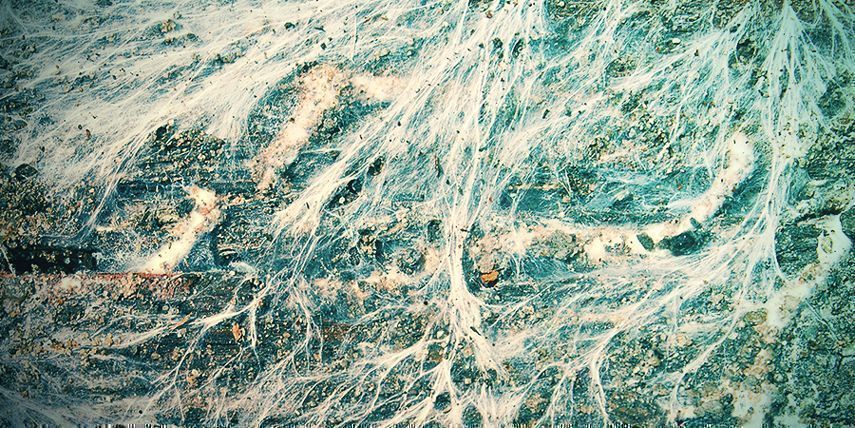
There are a few ways you can get spawn. The easiest way is to buy a fully colonized grow kit - such as the Supa Gro Kit 100% - and use this to further inoculate bags of sawdust or wood chips. Alternatively, you can start off with a bag of sterile grain which can easily be inoculated with a spore syringe.
It doesn’t matter which option you chose, the end result is the same. Once you have a bag of fully colonized grain, it can be added to a larger amount of sawdust to further spread the mycelium.
The reason why grain spawn is used to start the process is simple; it gives the fungus ample nutrition to feed on. The ensures rapid and vigorous growth, although it comes with the risk of contamination (all kinds of bacteria like to feed on grain). However, once the grain spawn is transferred to sawdust, the risk of infection drops, as the fungus has already fully colonized the grain, and sawdust doesn’t attract as many competitors.
The actual process of inoculating sawdust with grain spawn is simple. First, you will need to obtain sawdust, which can be bought from most pet shops. Using a bucket, immerse the sawdust in boiling water for 10 minutes or so – this will sterilize it sufficiently. Drain the sawdust and then start layering it in another bucket with your inoculated grain. Cover with a lid or place this now layered bucket in a large plastic bag to help maintain humidity. Open the bag once a day to allow fresh oxygen to enter. After a few weeks to a month, your sawdust should be completely inoculated and ready for the wild outdoors. You will need roughly 1.2KG of sawdust spawn for each square meter of mushroom patch.
Choosing A Site
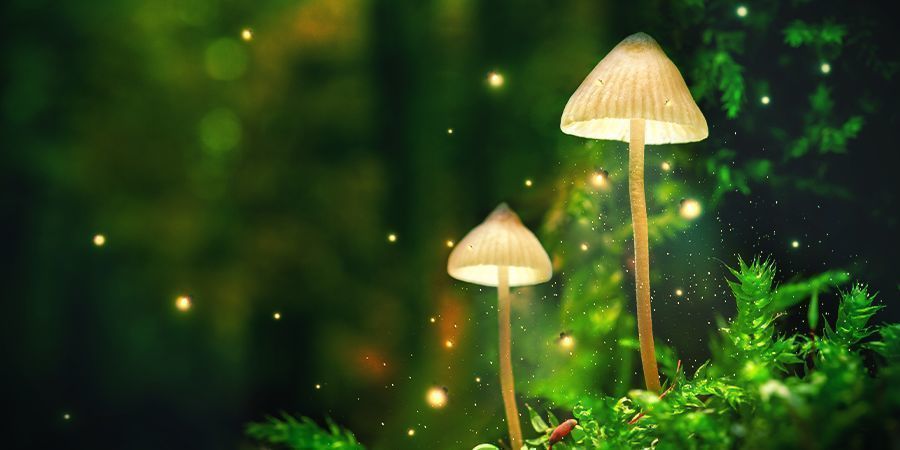
The first thing to consider before creating a magic mushroom patch is lighting. Generally speaking, most mushrooms require indirect sunlight. This is most certainly the case for magic mushrooms. Magic mushroom varieties tend to be heliotropes, meaning they are sun lovers. Therefore, when picking a patch to grow mushrooms, you should try and pick one that has a lot of light throughout the day, but is not exposed to direct sunlight for prolonged periods of time.
If the place is not going to be in your backyard, then ideally you want a site that is not too far away to walk daily during periods of fruiting. If it is too far out of the way, you run the risk of missing a potential harvest (the patch might require daily checking during the harvest period).
Places where grass and shrub meet forest tend to be the best, as they offer easy access and a variation in environmental factors. It is also good to choose a location with a subsurface flow of water, such as a slope or swale, as this will really help the mycelium in the patch thrive. If you can’t find anything like this, then a moist patch of land, with easy but secluded access, and dabbled sunlight will do.
Creating The Mushroom Patch
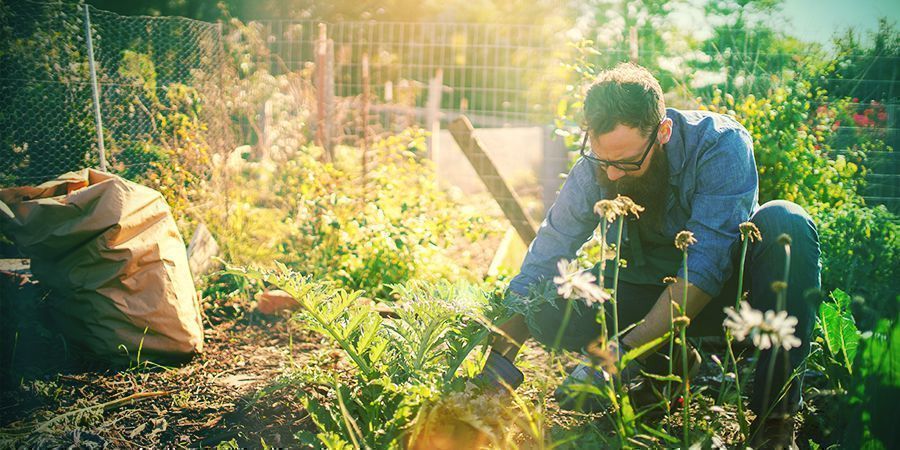
Once you have a location, you are going to need a couple of things to get rolling:
- Cardboard
- Sterile wood chips (sterilized in boiling water like above)
- Fully colonized sawdust spawn
- Straw or hay (optional)
Instructions
-
First, the site must be cleared of debris. This involves removing everything all the way down to the mineral earth. This helps remove any potential competition to the mycelium you will be cultivating for your magic mushrooms to grow from.
-
Once everything is removed, cover the area in cardboard.
-
Cover the cardboard with about 5cm of sterile wood chips, spread as evenly as possible.
-
Now, the wood chips need to be moistened for a few minutes. If you are doing this in your garden, then this can easily be done with a hose.
-
Now comes the time to place your first layer of sawdust spawn onto the wood chips. You need to evenly distribute roughly 400 grams of spawn per square meter.
-
Now place another layer of wood chips over the spawn. This layer needs to be roughly 7cm deep.
-
Once again, moisten the layer, and then cover evenly with another layer spawn - 400 grams per square meter.
-
Once this layer has been placed, add a 3cm layer of wood chips on top.
-
Moisten this layer of wood chips and cover it with another layer of sawdust spawn - 400 grams per square meter.
-
You should be left with 3 layers of wood chips and 3 layers of spawn, (totaling roughly 1.2KG per square meter). Now that it has been made, saturate the whole lot one last time with water.
-
Now cover it all with a cardboard layer to help keep the moisture locked in.
-
As an additional measure, it is possible to cover the patch with straw to act as extra protection. However, straw can sometimes contain aggressive strains of fungus, which could end up dominating your spawn. Therefore, any straw used should be sterilized beforehand and applied thinly. This way, by the time the straw rots down, your mycelium should have established itself enough to be able to resist any competition.
That’s it - you should have successfully implanted a colony of mycelium that will produce a fine crop of magic mushrooms. Now that everything is in place, all you need is patience - leave the patch undisturbed for at least 6 months. This will give the mycelium time to properly acclimatize and colonize the wood chips. Considering that most cubensis strains naturally produce fruiting bodies in late fall to early winter, it is best to start a new patch by March. To have enough fully colonized spawn ready by that time, it is necessary to inoculate the sawdust spawn ahead of time. So, to be on the safe side, start the this project in January, and you’ll certainly be on time.
In most climates the change of temperature and rain will initiate fruiting. However, should it be unusually dry, you can help by daily soaking the bed with water (once in the morning and once in the evening). When your mushrooms start growing, keep a eye on them - daily! When picking, make sure to keep a look out for any invasive species that might have invaded the beds – you won’t want to consume those!
Credit for this method of growing mushrooms goes to Paul Stamets. You can find out much more information about mushroom cultivation in his book ‘Mycelium Running”.
-
 4 min
27 September 2022
How To Take Magic Mushroom Spore Prints
In order to grow magic mushrooms from scratch, you need spores. It's from these tiny things that everything else grows! Taking your own spore print is easy enough, and can be the beginning of a...
4 min
27 September 2022
How To Take Magic Mushroom Spore Prints
In order to grow magic mushrooms from scratch, you need spores. It's from these tiny things that everything else grows! Taking your own spore print is easy enough, and can be the beginning of a...
-
 5 min
26 April 2022
How To Harvest Magic Mushrooms
Now the time has come to harvest your magic mushrooms, you're almost there. Mastering this stage is fairly simple, but crucial if you want to reap the rewards of all your hard work. Find out how...
5 min
26 April 2022
How To Harvest Magic Mushrooms
Now the time has come to harvest your magic mushrooms, you're almost there. Mastering this stage is fairly simple, but crucial if you want to reap the rewards of all your hard work. Find out how...
-
 2 min
15 November 2018
How to Grow Your Own Magic Truffles (From Scratch)
Growing your own magic truffles is a highly satisfying activity. Not only does it save you money, it allows you to establish a deeper connection with the truffles. However, mushrooms are not the...
2 min
15 November 2018
How to Grow Your Own Magic Truffles (From Scratch)
Growing your own magic truffles is a highly satisfying activity. Not only does it save you money, it allows you to establish a deeper connection with the truffles. However, mushrooms are not the...
-
 3 min
25 August 2018
Grow Magic Mushrooms With Our Outdoor Cultivation Kit
Take the uncertainty of preparing, growing, and harvesting magic mushrooms away. With a step-by-step guide and a quality cultivation kit, you can develop your very own outdoor magic mushroom patch!
3 min
25 August 2018
Grow Magic Mushrooms With Our Outdoor Cultivation Kit
Take the uncertainty of preparing, growing, and harvesting magic mushrooms away. With a step-by-step guide and a quality cultivation kit, you can develop your very own outdoor magic mushroom patch!





 United States
United States


